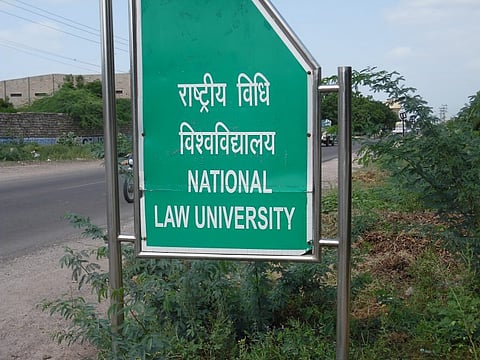
- Latest Legal News
- News
- Dealstreet
- Viewpoint
- Columns
- Interviews
- Law School
- Legal Jobs
- हिंदी
- ಕನ್ನಡ

The latest edition of the Common Law Admission Test (CLAT 2019) was held on Sunday across the country. Students appeared at forty centres across India to take this year’s exam.
CLAT 2019 was held for admission to undergraduate and postgraduate programmes at the following Universities:
| National Law School of India University, Bangalore |
| National Academy of Legal Studies and Research, Hyderabad |
| National Law Institute University, Bhopal |
| West Bengal National University of Judicial Sciences, Kolkata |
| National Law University, Jodhpur |
| Hidayatullah National Law University, Raipur |
| Gujarat National Law University, Gandhinagar |
| Ram Manohar Lohiya National law University, Lucknow |
| Rajiv Gandhi National Law University, Patiala |
| Chanakya National Law University, Patna |
| National University of Advanced Legal Studies, Kochi |
| National Law University Odisha, Cuttack |
| National University of Study and Research in Law, Ranchi |
| National Law University and Judicial Academy, Guwahati |
| Damodaram Sanjivayya National Law University, Vishakhapatnam |
| Tamil Nadu National Law School, Trichy |
| Maharashtra National Law University, Mumbai |
| Maharashtra National Law University, Nagpur |
| Maharashtra National Law University, Aurangabad |
| Himachal Pradesh National Law University, Shimla |
| Dharmashastra National Law University, Jabalpur |
DNLU Jabalpur is the latest entrant to the CLAT fold this year. A total of 2,584 seats are up for grabs at the above mentioned 21 National Law Universities. A number of other law schools are also using CLAT 2019 scores for admission.
Below follows an evaluation of this year’s exam by CLAT mentor Rajneesh Singh.
A brilliant paper, conducted without any glitches: Rajneesh Singh
This time, the CLAT paper was very good and the exam was conducted without any complications (as per records so far). Furthermore, the exam was offline and used the OMR sheet answer format unlike the previous year.
The CLAT Consortium has taken the impressive initiative of providing all CLAT takers with a copy of their OMR answer sheet. This is another good step towards transparency. I am sure that with the setting up of a permanent body, the conduct of the exam in the years to come will run smoothly.
The difficulty level of the CLAT 2019 paper was average. The paper was well-balanced, which is again a sign of a good paper. The problem with an extremely tough or an extremely easy paper is that the luck factor comes into play, influencing the results negatively. Since the paper was moderately difficult this time, the influence of the luck factor got minimised. This paper is going to reward intelligent, hardworking and extremely well-prepared students very positively.
The cut-off this time is likely to be lesser. Only very capable students will be able to score very high marks and get NLSIU Bangalore. Also, the cut-off will be considerably low till GNLU, but there will be a very small gap between the cut-offs for RGNUL and GNLU. My detailed expected cut-off will be published by June 1.
It should be taken into account that the marks scored in the GK section will become the deciding factor for getting NLSIU Bangalore, whereas the marks of mathematics along with GK will be the deciding factor for getting NUJS Kolkata, NLU Jodhpur, and NLIU Bhopal. The GK, mathematics, and legal reasoning questions were very good, but the logical reasoning questions could have been more qualitative. It is good that English was not tough, otherwise it would have become a disadvantage for the CLAT takers from non-urban areas.
There might be one error in the reasoning section and another in the maths section, where as claimed by a few students, the number “1 1/4″ was possibly misprinted as “11/4.” But it will be only clear after the answer key is released in the next two days.
After the answer key is released, students will be able to calculate their scores and raise objection to any wrong question or answer. The representations can be sent by students for a period of two to three days after the notice comes out. A committee comprising neutral and highly qualified persons will finalise the errors and the corrections to be made. The final answer key will be released after this exercise.
The result is expected to come out between June 8-10.
Important points to be noted by the students as well as the parents:
Wishing all CLAT takers the best.
For any queries, you can post your doubts in the comment section given below.
Rajneesh Singh is the founder of CLAT Essentials (https://testprepshop.ccavenue.com), clatgk.com (Complete solution for CLAT GK prep) and the Do-Zen (https://www.facebook.com/rajneeshdozen/).